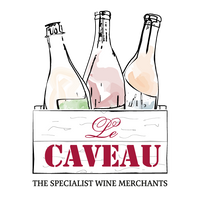Indulgence is one of the most lithely elegant Champagnes out there, rosé or otherwise. It's made entirely from Pinot Noir, and its maceration is unusually long, lasting for four days. "I don't want to make something fruity and easy," says Dominique.
Brilliantly violet pink in the glass with a discrete mousse, the nose offers aromas of brambleberries, wild strawberries, Rainier cherries, and verbena. The palate is harmonious, complex, yet so very drinkable with notes of ripe raspberries, strawberries and sage before a zippy, deliciously tart finish. It’s more like a light red wine than a traditional rosé champagne, but it’s delicious, and highly expressive of Aube terroir.
CHAMPAGNE MARIE COURTIN, DOMINIQUE MOREAU, Côte de Bars
Organic, Natural
Champagne Marie Courtin is located in the village of Polisot in the Côte des Bars, in the southern part of the Champagne region. With its slightly warmer temperatures, this area is particularly prized for its Pinot Noir grapes. Combined with the Kimmeridgean limestone sub soils, the champagnes retain a freshness similar to Chablis, which is actually closer to Polisot than Reims! In fact, many of the Grand Marques source their Pinot Noir from the Côte des Bars because of this unique combination of texture and delineation that the sub-zone provides.
Dominique Moreau created the estate in 2005 with a vision to produce a series of single-vineyard, single varietal, single vintage Champagnes from biodynamically-grown grapes that are farmed and elaborated with meticulous care. This philosophy is in stark contrast with the predominant mindset in Champagne which is all about blending grapes, vineyards and vintages (for a consistent product), and with a tendency towards very high yields and full-on chemical treatments.
Dominique named her estate after her grandmother, Marie Courtin, whom she describes as a “woman of the earth”. Most of her wines come from a hillside vineyard of 40–45-year-old, massale-selection Pinot Noir in Polisot.
The combination of low yields, clay-limestone soils (with bands of Kimmeridgian) and an east/southeast exposure gives the wines both power and cut, with an intense brininess and minerality at their core.
At harvest, the grapes are all harvested by hand. The wines are fermented with natural yeasts that have been selected from their vineyards and cultivated separately. These native yeasts are used for both the primary and secondary fermentations. Lastly, there is no dosage added upon disgorgement.
The style of all her wines is super-energetic and chiseled, though with an underlying power from both her viticultural practices and the terroirs and varietals that she exploits. These are spectacular wines at the table as they combine multiple vectors of complexity, power and delineation that all play off each other depending on the dishes they are served with.




